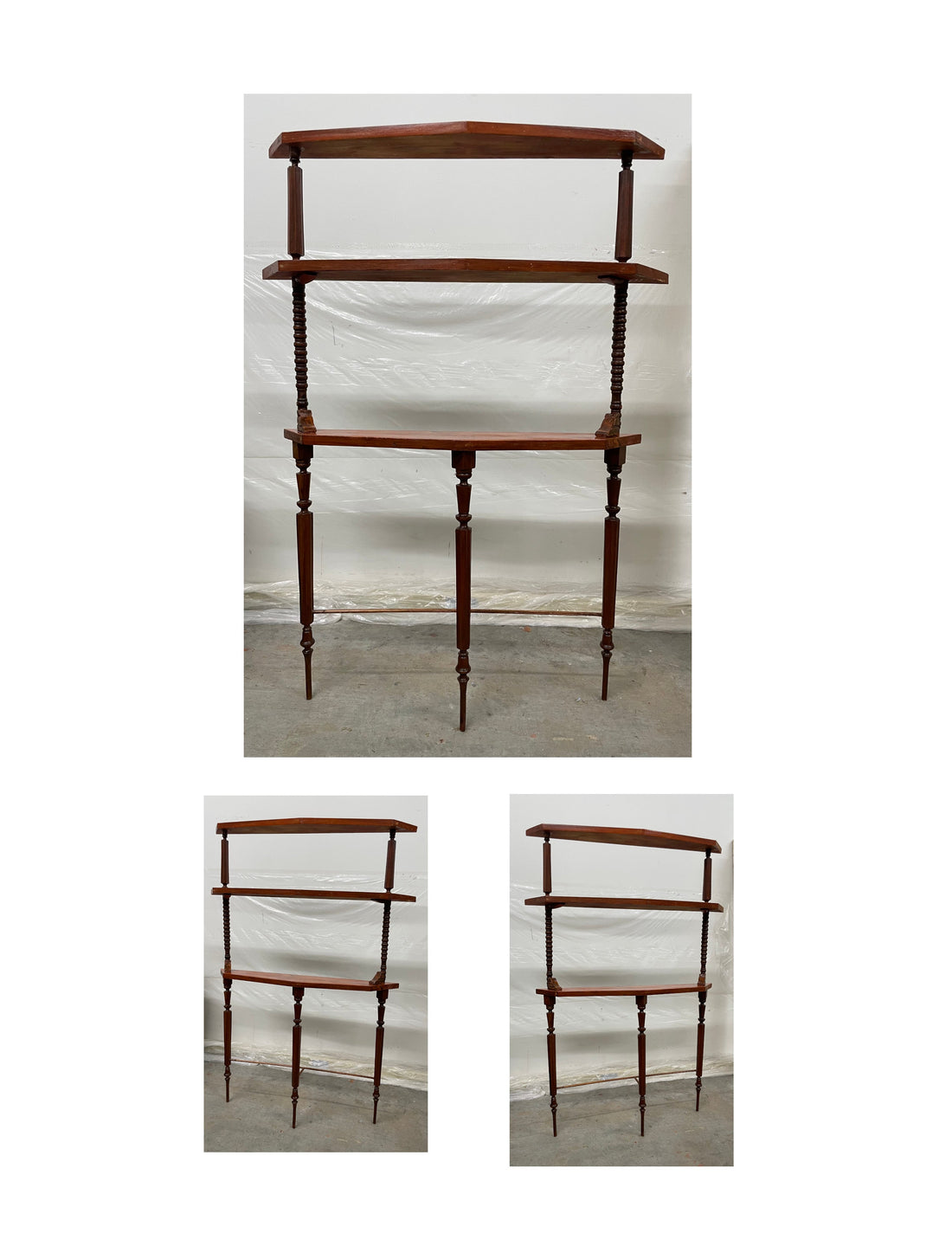
Dragonfly Shelves: A Contemporary Primitive Statement Piece- About the design and process
Share
The following is a story about this exciting little piece that is the first of many designs in the works to come from Happiest Kid Finds. Designing and making statement pieces to complement the posters and art work that I've procured over the years is a natural progression for me as an artist and for my company that I see as a creative hub in all aspects.
One of the requirements and key factors that I will strive for is that each project be made from at least 70% of repurposed materials and elements that are transformed into statement pieces for interiors. For this piece and others in progress, emphasizing a little wear here and there preserves the uniqueness of the elements that are brought together as if they were destined to be while still bearing traces of their history. Working with what already exists is my specialty and will be the trademark of Happiest Kid Finds.
In the summer of 2024, I volunteered for a deconstruction project of a soon-to-be-demolished house in Leland, in North Carolina.
The house was built in the late 1800s- early 1900s, and Legacy Architectural Salvage was contacted about retrieving the architectural elements of the house before demolition. I confirmed with a fellow volunteer: The "shelves" were actually window pediments. "The fanciful piece over the top of a window or door," he explained.
Although I wasn't aware of what they would soon become when I initially saw them, the angles caught my eye. As they were being carried out of the house, I thought, "What's that!"

It wasn't until I brought them to my shop that the concept emerged - these are stylized wings of a dragonfly.
They were heavy; two of the same width and one that wasn't quite as wide.
Hmmm??? I racked my mind for what would work for the body.
And then I made the connection. I had purchased three sets of fluted legs years ago from Mongers Market in Connecticut, an architectural salvage warehouse like the one that was in charge of the Leland project.
 I fell in love with the legs and thought to use them for another project, but they were too fine; too regal for what I was working on at the time. So I set them aside until the right time came.. several years later and what a pairing!
I fell in love with the legs and thought to use them for another project, but they were too fine; too regal for what I was working on at the time. So I set them aside until the right time came.. several years later and what a pairing!
The slender, tapered construction reminded me of the insect's body.
The greatest challenge, I discovered, was connecting the graceful, almost delicate, legs with the top-heavy wings. Especially because I envisioned a 3-tier unit, so it was imperative that everything was secure. I made a quick sketch as a means of charting the course and off I went.
From a design standpoint, I wanted a bit of contrast between the top and bottom shelf, so I decided to introduce the narrow, turned legs which came from a farm in Wilmington, NC.
After removing layers of paint, dust, and dirt from the pieces, it was time to assemble. In order to orchestrate the design, it took a bit of offsetting to find the balance and distribute the weight evenly while retaining the grace of the dragonfly.

Getting the base situated gave me all of the confidence to move forward. Given that it's a tripod, I attached a brace a third of the way down to help stabilize the section in preparation for the next two tiers.
 The second tier proved to be the most infuriating, however. Being the transitional section, I needed to figure out how to stabilize the heavy shelf without compromising the overall design.
The second tier proved to be the most infuriating, however. Being the transitional section, I needed to figure out how to stabilize the heavy shelf without compromising the overall design.
After multiple attempts, I finally achieved the support that was required by creating cantilevers made from the neck of the turned legs and feet at the base from scrap wood that I had in the shop.
Once I felt that I was in the clear, I moved onto adding the top tier, For this part, I chose to shorten the legs and use the fluted section for consistency. I also shaved off an inch from the back of the shelf for added balance.


dimensions: 63" H x 45 1/4" W x 8" D - approx. 15 lbs.
date: February 2025
condition: Good. This item was made and crafted from repurposed architectural elements; some imperfections in the elements were intentionally left as part of a reddish-gold paint wash and a golden oak stain was applied and sealed with a water-based polyurethane.
Standing at just over 5 feet, it was time to finish the project. From here on, I followed how the elements chose to be presented. In this case, a reddish-gold wash was applied to give a sense of richness and timelessness while allowing the wood grain and some of the imperfections to show through for character.
...emphasizing a little wear here and there preserves the uniqueness of the elements that are brought together as if they were destined to be while still bearing traces of their history. Working with what already exists is my specialty and will be the trademark of Happiest Kid Finds.



